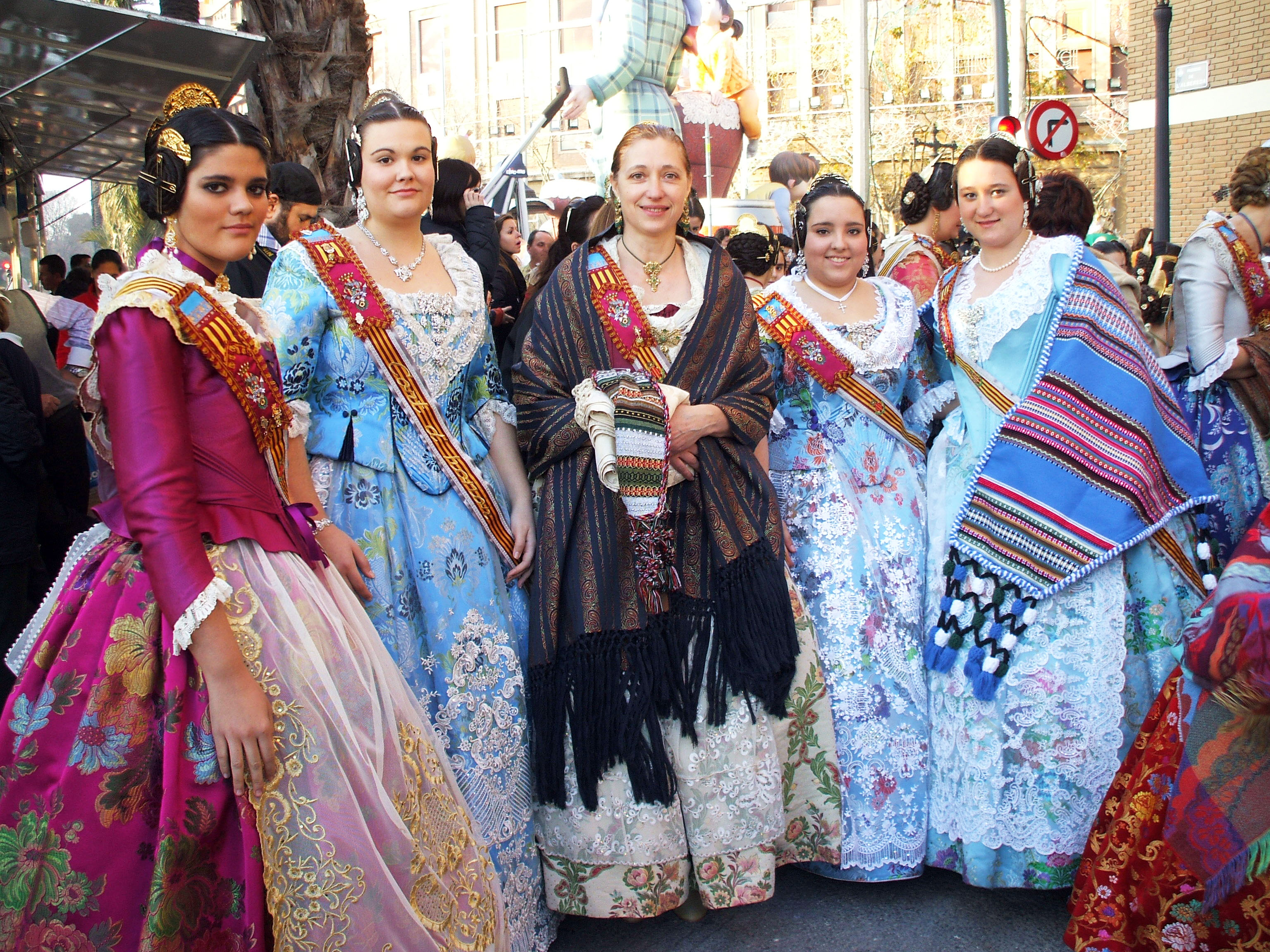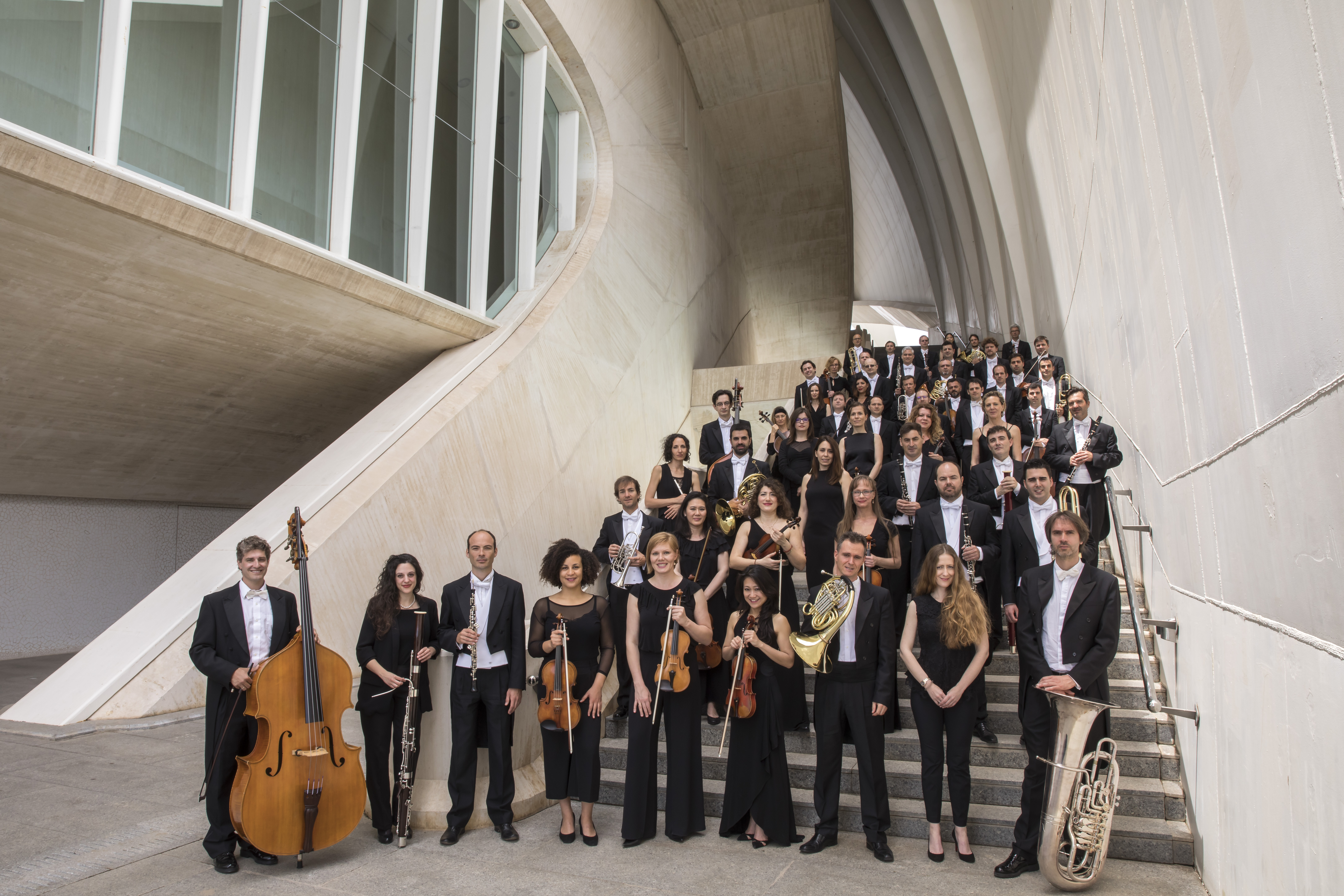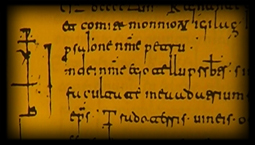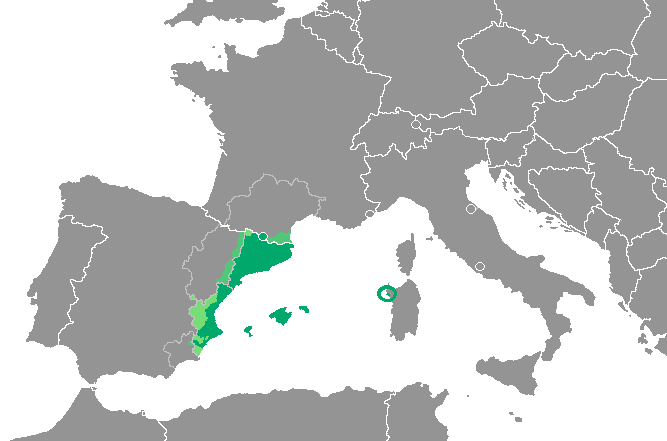|
Himne De L'Exposició
The ''Himne de l'Exposició''Full name: ''Himne de l'Exposició Regional de 1909''. (, "Anthem of the Exposition") or ''Himne de València'' ("Anthem of Valencia") is the official anthem of the Valencian Community, Spain. The song was composed by José Serrano Simeón with lyrics written by Maximiliano Thous Orts for the Valencia Regional Exhibition. The music is based on a 16th-century anthem dedicated to Saint George, who was the patron saint of the Kingdom of Valencia. It was approved by the mayors of Alicante, Castellón and Valencia in May 1925, and it was declared as the official anthem of the Valencian Community in 1981, with the approval of the Valencian Statute of Autonomy. There has been some controversy over some of the words used. Some lines are considered as being too pro-Spain and some sectors of the community are pushing for an alternative tune, the Muixeranga, to be adopted instead. The Muixeranga has no lyrics, and hails from the local holidays of the town o ... [...More Info...] [...Related Items...] OR: [Wikipedia] [Google] [Baidu] |
Valencian Community
The Valencian Community is an Autonomous communities of Spain, autonomous community of Spain. It is the fourth most populous Spanish Autonomous communities of Spain, autonomous community after Andalusia, Catalonia and the Community of Madrid with more than five million inhabitants.Instituto Nacional de Estadística, Madrid, 2020. Its eponymous capital Valencia is the third largest city and metropolitan area in Spain. It is located along the Mediterranean Sea, Mediterranean coast on the east side of the Iberian Peninsula. It borders Catalonia to the north, Aragon and Castilla–La Mancha to the west, and Region of Murcia, Murcia to the south, and the Balearic Islands are to its east. The Valencian Community is divided into three Provinces of Spain, provinces: province of Castellón, Castellón, province of Valencia, Valencia and province of Alicante, Alicante. According to Valencia's Statute of Autonomy, the Valencian people are a ''nationalities and regions of Spain, "historical ... [...More Info...] [...Related Items...] OR: [Wikipedia] [Google] [Baidu] |
Spain
Spain, or the Kingdom of Spain, is a country in Southern Europe, Southern and Western Europe with territories in North Africa. Featuring the Punta de Tarifa, southernmost point of continental Europe, it is the largest country in Southern Europe and the fourth-most populous European Union member state. Spanning across the majority of the Iberian Peninsula, its territory also includes the Canary Islands, in the Eastern Atlantic Ocean, the Balearic Islands, in the Western Mediterranean Sea, and the Autonomous communities of Spain#Autonomous cities, autonomous cities of Ceuta and Melilla, in mainland Africa. Peninsular Spain is bordered to the north by France, Andorra, and the Bay of Biscay; to the east and south by the Mediterranean Sea and Gibraltar; and to the west by Portugal and the Atlantic Ocean. Spain's capital and List of largest cities in Spain, largest city is Madrid, and other major List of metropolitan areas in Spain, urban areas include Barcelona, Valencia, Seville, ... [...More Info...] [...Related Items...] OR: [Wikipedia] [Google] [Baidu] |
Falles
The Fallas (; ) is a traditional celebration held annually in commemoration of Saint Joseph in the city of Valencia, Spain. The five main days celebrated are from 15 to 19 March,''Fallas of Valencia'' Fundació Visit Valencia while the Mascletà, a pyrotechnic spectacle of firecracker detonation, takes place every day from 1 to 19 March. The term ''Fallas'' refers to both the celebration and the Falla monuments (''Falla'', singular; ''Fallas''/, plural) burnt during the celebration. The Fallas (''Falles'' in Valencian) festival was added to UNESCO's intangible cultural heritage of humanity list on 30 November 2016. A number of towns in the Valencian Community have similar cele ... [...More Info...] [...Related Items...] OR: [Wikipedia] [Google] [Baidu] |
Regional Songs
In geography, regions, otherwise referred to as areas, zones, lands or territories, are portions of the Earth's surface that are broadly divided by physical characteristics (physical geography), human impact characteristics (human geography), and the interaction of humanity and the environment ( environmental geography). Geographic regions and sub-regions are mostly described by their imprecisely defined, and sometimes transitory boundaries, except in human geography, where jurisdiction areas such as national borders are defined in law. More confined or well bounded portions are called '' locations'' or ''places''. Apart from the global continental regions, there are also hydrospheric and atmospheric regions that cover the oceans, and discrete climates above the land and water masses of the planet. The land and water global regions are divided into subregions geographically bounded by large geological features that influence large-scale ecologies, such as plains and features. A ... [...More Info...] [...Related Items...] OR: [Wikipedia] [Google] [Baidu] |
Spanish Anthems
Spanish might refer to: * Items from or related to Spain: **Spaniards are a nation and ethnic group indigenous to Spain **Spanish language, spoken in Spain and many countries in the Americas **Spanish cuisine ** Spanish history **Spanish culture **Languages of Spain, the various languages in Spain Other places * Spanish, Ontario, Canada * Spanish River (other), the name of several rivers * Spanish Town, Jamaica Other uses * John J. Spanish (1922–2019), American politician * "Spanish" (song), a single by Craig David, 2003 See also * * * Español (other) * Spain (other) * España (other) * Espanola (other) * Hispania, the Roman and Greek name for the Iberian Peninsula * Hispanic, the people, nations, and cultures that have a historical link to Spain * Hispanic (other) * Hispanism * Spain (other) * National and regional identity in Spain * Culture of Spain The culture of Spain is influenced by its Western ... [...More Info...] [...Related Items...] OR: [Wikipedia] [Google] [Baidu] |
Anthems Of The Autonomous Communities Of Spain
Several of the 17 autonomous communities of Spain, autonomous communities of the Spain, Kingdom of Spain, plus the two Autonomous communities of Spain#Autonomous cities, autonomous cities, have their own anthems, ranging from quasi-national anthems of the historical nationalities and regions of Spain, nationalities to regional anthems and songs, with some virtually unknown even in their own communities. Below is a list of those songs. See also * Autonomous communities of Spain * Flags of the autonomous communities of Spain * Coats of arms of the autonomous communities of Spain * List of regional anthems {{National anthems of Europe Lists of anthems, Spain Spain geography-related lists Autonomous communities of Spain, Anthems Spanish anthems, Autonomous communities ... [...More Info...] [...Related Items...] OR: [Wikipedia] [Google] [Baidu] |
Senyera Reial
The flag of the Valencian Community and of the Valencia, Spain, city of Valencia, known as ''Reial Senyera'' (, "Royal Senyera"), is the traditional Senyera, composed of four red bars on a yellow background, crowned with a blue strip party per pale next to the hoist. It was adopted on 1 July 1982. It is an historical derivation of the ''Senyera'', the heraldic symbol of the Crown of Aragon, also used today with few variations in all the former kingdoms and counties which were a part of this crown. History of the flag As many other flags of medieval origin, the Senyera, or "" (royal Ensign (flag), ensign), was used in those years as the arms of the King of Aragon. While not existing still in the Middle Ages, the concept of national flag as understood today, the true symbol of the nationality was constituted on the royal shield. It is traditionally considered that a Senyera was granted by James I of Aragon as the arms of Valencia following the Christian conquest from Moorish ... [...More Info...] [...Related Items...] OR: [Wikipedia] [Google] [Baidu] |
Francisco González Sarriá
Francisco is the Spanish and Portuguese form of the masculine given name ''Franciscus''. Meaning of the name Francisco In Spanish, people with the name Francisco are sometimes nicknamed "Paco". San Francisco de Asís was known as ''Pater Communitatis'' (father of the community) when he founded the Franciscan order, and "Paco" is a short form of ''Pater Communitatis''. In areas of Spain where Basque is spoken, " Patxi" is the most common nickname; in the Catalan areas, "Cesc" (short for Francesc) is often used. In Spanish Latin America and in the Philippines, people with the name Francisco are frequently called "Pancho". " Kiko"and "Cisco" is also used as a nickname, and "Chicho" is another possibility. In Portuguese, people named Francisco are commonly nicknamed " Chico" (''shíco''). People with the given name * Pope Francis (1936-2025) is rendered in the Spanish, Portuguese and Filipino languages as Papa Francisco * Francisco Acebal (1866–1933), Spanish writer and autho ... [...More Info...] [...Related Items...] OR: [Wikipedia] [Google] [Baidu] |
Orquestra De La Comunitat Valenciana
The Orquestra de la Comunitat Valenciana (, English translation 'Orchestra of the Region of Valencia'), is a Spanish orchestra based in Valencia, Spain, Valencia. It is the resident orchestra of Valencia’s Palau de les Arts Reina Sofía. History The orchestra was created in 2006 to be the orchestra of the new opera house, the Palau de les Arts Reina Sofía. The first chief conductor of the orchestra was Lorin Maazel, from 2006 to 2011. Omer Meir Wellber served as the orchestra's next chief conductor, from 2011 to 2014. In 2015, Roberto Abbado and Fabio Biondi became joint chief conductors of the orchestra. Biondi served in the post through 2018, and Abbado through 2019. On 1 September 2021, James Gaffigan (conductor), James Gaffigan became chief conductor of the orchestra, with an initial contract of 4 years. In December 2024, the orchestra announced that Gaffigan is to stand down as its chief conductor at the close of the 2024-2025 season. In 2022, Sir Mark Elder first g ... [...More Info...] [...Related Items...] OR: [Wikipedia] [Google] [Baidu] |
Plácido Domingo
José Plácido Domingo Embil (born 21 January 1941) is a Spanish opera singer, conductor, and arts administrator. He has recorded over a hundred complete operas and is well known for his versatility, regularly performing in Italian, French, German, Spanish, English and Russian in the most prestigious opera houses in the world. Although primarily a '' lirico-spinto'' tenor for most of his career, especially popular for his Cavaradossi, Hoffmann, Don José and Canio, he quickly moved into more dramatic roles, becoming the most acclaimed Otello of his generation. In the early 2010s, he transitioned from the tenor repertory into exclusively baritone parts, including '' Simon Boccanegra''. As of 2020, he has performed 151 different roles. Domingo has also achieved significant success as a crossover artist, especially in the genres of Latin and popular music. In addition to winning fourteen Grammy and Latin Grammy Awards, several of his records have gone silver, gold, platin ... [...More Info...] [...Related Items...] OR: [Wikipedia] [Google] [Baidu] |
Spanish Language
Spanish () or Castilian () is a Romance languages, Romance language of the Indo-European languages, Indo-European language family that evolved from the Vulgar Latin spoken on the Iberian Peninsula of Europe. Today, it is a world language, global language with 483 million native speakers, mainly in the Americas and Spain, and about 558 million speakers total, including second-language speakers. Spanish is the official language of List of countries where Spanish is an official language, 20 countries, as well as one of the Official languages of the United Nations, six official languages of the United Nations. Spanish is the world's list of languages by number of native speakers, second-most spoken native language after Mandarin Chinese; the world's list of languages by total number of speakers, fourth-most spoken language overall after English language, English, Mandarin Chinese, and Hindustani language, Hindustani (Hindi-Urdu); and the world's most widely spoken Romance language ... [...More Info...] [...Related Items...] OR: [Wikipedia] [Google] [Baidu] |
Valencian Language
Valencian () or the Valencian language () is the official, historical and traditional name used in the Valencian Community to refer to the Romance language also known as Catalan language, Catalan, 'hour'. However (although regarded as non-standard), there are cases where regressive metaphony occurs over pretonic vowels; e.g. > 'affects', > 'towel'. :** Vowel harmony differs greatly from dialect to dialect, while many varieties assimilate both to the height and the quality of the preceding stressed vowel (e.g. 'Earth, land' and 'woman'); in other varieties, it is just the height that assimilates, so that and can be realised with either ( and/or ) or with ( and/or ), depending on the region and speaker. :*** In some subvarieties the unstressed vowels produced by vowel harmony may actually be higher than the stressed ones (e.g. 'door'). :* In a wider sense, vowel assimilations can occur in further instances (that is all or most instances of final unstressed , r ... [...More Info...] [...Related Items...] OR: [Wikipedia] [Google] [Baidu] |





